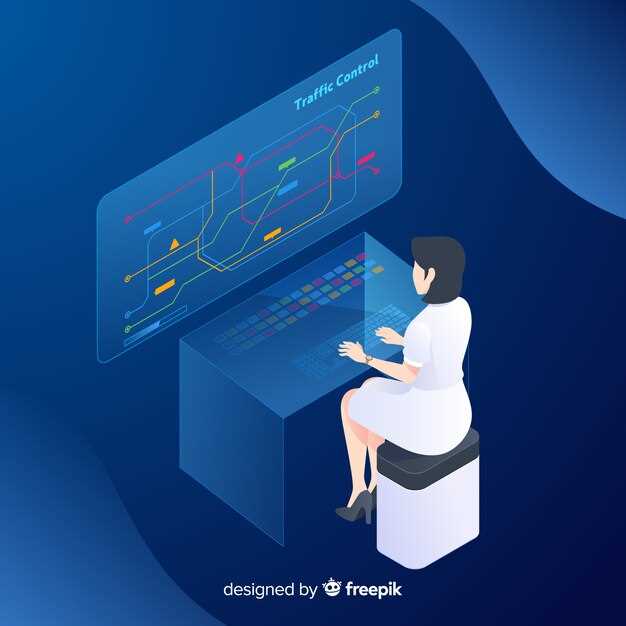
In the fast-paced world of competitive racing, telemetry systems play a crucial role in ensuring optimal performance and strategy execution. These systems allow teams to perform live tracking of critically important metrics, such as speed, fuel consumption, and tire temperature. By gathering data in real time, teams can make informed decisions that can significantly impact the outcome of a race.
Utilizing real-time data effectively can be the difference between victory and defeat. Telemetry enables engineers and strategists to analyze a vehicle’s performance instantly, adjusting parameters on-the-fly to better respond to dynamic racing conditions. With this level of insight, teams can craft race strategies that are not only reactive but also proactive, anticipating challenges and optimizing their approach to gain an edge over competitors.
The integration of advanced telemetry systems has revolutionized the way racing teams operate, transforming data into actionable intelligence. As technology continues to evolve, the importance of real-time data utilization in the racing arena will only grow stronger, paving the way for safer, faster, and more efficient race experiences.
Implementing Race Tracking Solutions Using Telemetry Data

Implementing race tracking solutions involves utilizing telemetry data to enhance the experience for both participants and spectators. Telemetry systems collect and transmit real-time data regarding various parameters such as speed, location, and performance metrics. This data is invaluable for analyzing race dynamics and providing insights that can be used to improve strategies.
Real-time tracking solutions facilitate live updates on racers’ positions, allowing fans to engage more interactively with events. By displaying the exact location of each participant on a map, supporters can follow their favorite competitors throughout the race, making the experience more thrilling. The integration of telemetry data enables race organizers to provide accurate information, reducing the delays often associated with traditional tracking methods.
To implement effective race tracking, several components must be integrated. First, reliable telemetry devices must be installed on each racing participant. These devices gather data continuously and transmit it to centralized processing systems. The information is then processed and visualized on digital platforms to deliver live updates.
Moreover, leveraging cloud computing enhances the scalability of race tracking solutions. Cloud infrastructure allows for the handling of large volumes of data without latency issues, ensuring that updates are disseminated quickly and efficiently. This is particularly important in competitive environments where split-second decisions can greatly influence outcomes.
Additionally, user-friendly interfaces should be developed to present telemetry data clearly. Effective visualization tools can help users comprehend complex data sets, thereby improving their overall experience. Interactive dashboards can display crucial statistics, such as lap times, pacing strategies, and performance comparisons among racers.
In conclusion, the implementation of race tracking solutions using telemetry data not only enriches the spectator experience but also provides racers with invaluable insights. By harnessing live data and innovative technologies, the future of race management stands to benefit significantly from these advancements.
Challenges in Collecting and Analyzing Live Data from Races

Collecting and analyzing live data from races presents numerous challenges due to the complexity of the environment and the need for real-time processing. One major issue is the reliability of data transmission. During a race, the ability to send and receive data without delays or interruptions is crucial. Adverse weather conditions, physical obstructions, and interference from other electronic devices can hinder the effectiveness of telemetry systems, leading to data loss or corruption.
Another challenge is the sheer volume of data generated in real-time during races. Each vehicle is equipped with numerous sensors that monitor speed, engine performance, tire conditions, and other critical metrics. The aggregation of this data requires robust processing capabilities and efficient storage solutions. Systems must be designed to handle high throughput while ensuring that critical information is prioritized for immediate analysis.
Latency is also a significant concern. In a race environment, even minimal delays in data transmission can result in missed opportunities for strategic decision-making. Teams rely on instantaneous feedback to adapt their strategies, monitor competitors, and make timely adjustments. Therefore, ensuring low-latency communication channels is essential for effective analysis.
Data interpretation poses further difficulties. The live data collected during races is often complex and multifaceted. Analysts must possess advanced analytical tools and techniques to derive actionable insights from this information. Misinterpretation of data can lead to poor decision-making and affect overall performance.
Lastly, managing varying data formats is a challenge. Different teams and systems might utilize diverse protocols and standards for data collection. This fragmentation can complicate the consolidation of information for comprehensive analysis, making interoperability a critical factor for success in utilizing live race data effectively.
Enhancing Viewer Engagement Through Real-Time Performance Metrics
In today’s fast-paced digital environment, tracking viewer engagement is crucial for content creators and advertisers alike. Utilizing real-time data performance metrics allows stakeholders to adapt their strategies instantly, ensuring they capture audience attention effectively. By analyzing viewer behavior as it happens, organizations can tailor their content to meet the preferences and interests of their audience.
One of the primary advantages of implementing real-time performance metrics is the ability to monitor key performance indicators (KPIs) live. Metrics such as viewer retention rates, peak engagement times, and interaction levels provide invaluable insights. For instance, if a specific segment of a broadcast generates high interaction rates, content can be modified on the spot to capitalize on that momentum.
Moreover, the integration of live feedback mechanisms enhances the viewing experience. Audiences increasingly expect to participate in the content creation process, having their opinions shaped by instantaneous metrics. Polls, chat features, and reaction buttons allow viewers to express their preferences, which can be analyzed and incorporated into ongoing broadcasts.
Utilizing this data enables organizations to foster a dynamic relationship with their audience. By responding to live feedback, content creators can build a sense of community, making viewers feel more invested in the performance. This deepened engagement often leads to increased viewership, loyalty, and ultimately, a more substantial return on investment.
As technology continues to evolve, the future of viewer engagement will increasingly rely on real-time data utilization. Organizations that prioritize these performance metrics will not only enhance viewer satisfaction but also stay ahead in the competitive landscape of digital content delivery.












